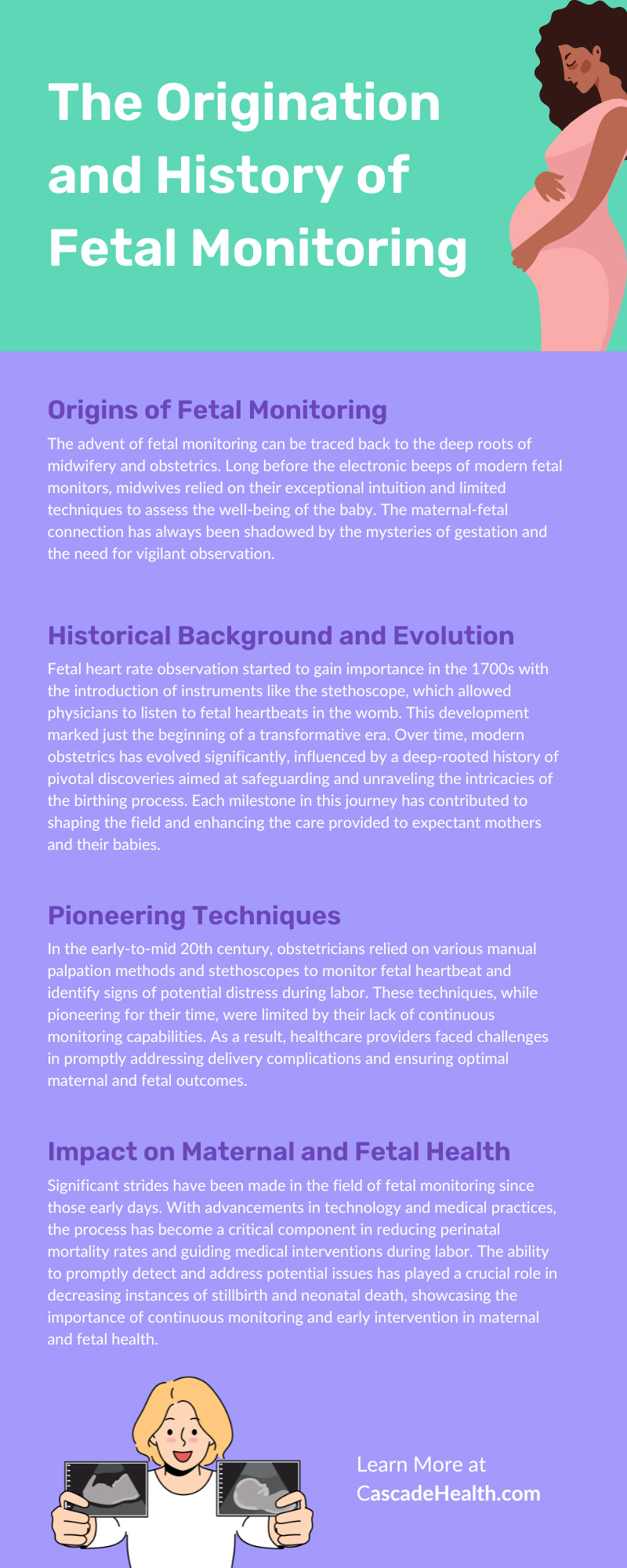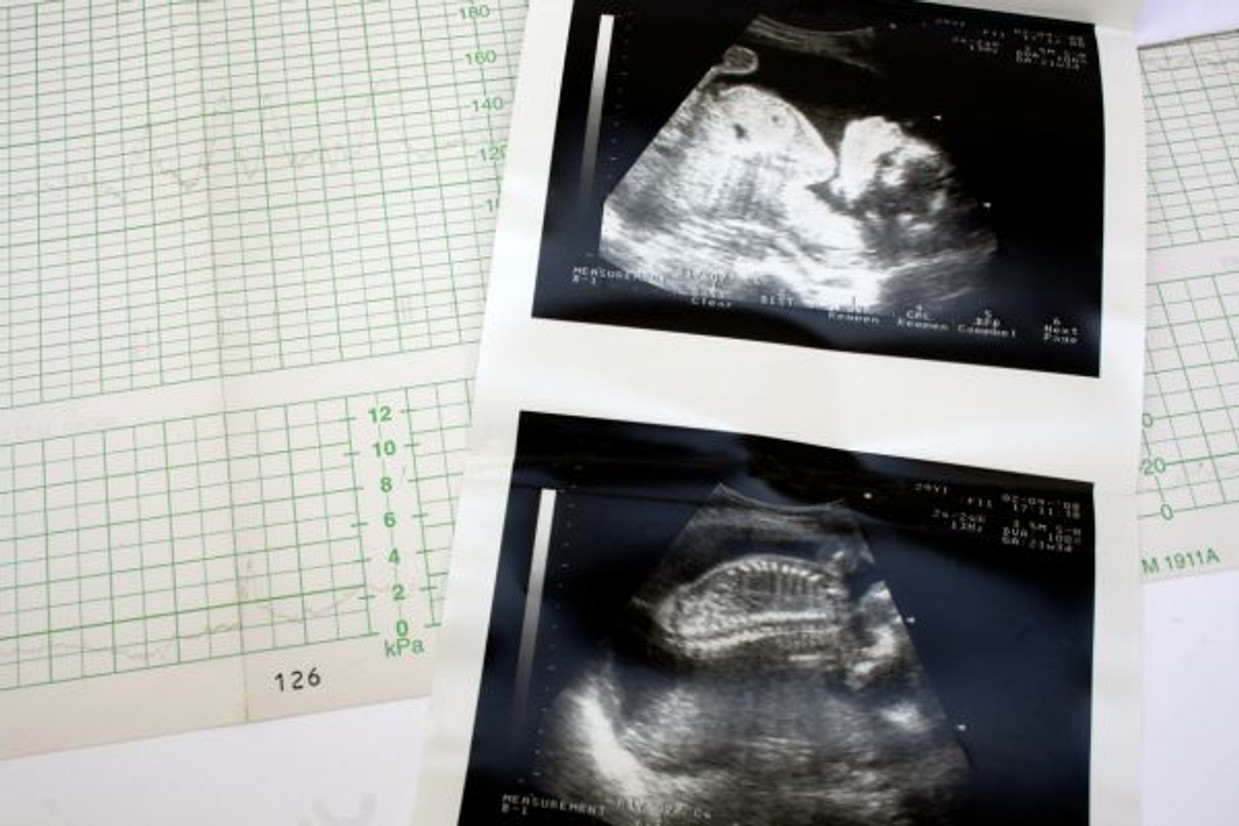The Origination and History of Fetal Monitoring
In the vast and intricate world of obstetrics, the heartbeat of an unborn child has always been a profound source of wonder, worry, and medical innovation. Fetal monitoring has transformed childbirth, providing a lens into the womb that can mean the difference between life and death. We’ll discuss the origination and history of fetal monitoring and how it’s a testament to human ingenuity, compassion, and resilience in the face of the extraordinary challenges of obstetrics.
Importance of Fetal Monitoring in Obstetrics
At the heart of every maternity ward, the sound of a fetal heartbeat echoes through the corridors—anticipation of a new life. From ensuring safe delivery and monitoring fetal health to alerting medical professionals to potential complications, the role of fetal monitoring is indispensable. As we explore its evolution, we gain a deeper appreciation for why this practice is at the center of every birthing plan and the touchstone of obstetric care.
Origins of Fetal Monitoring
The advent of fetal monitoring can be traced back to the deep roots of midwifery and obstetrics. Long before the electronic beeps of modern fetal monitors, midwives relied on their exceptional intuition and limited techniques to assess the well-being of the baby. The maternal-fetal connection has always been shadowed by the mysteries of gestation and the need for vigilant observation.
Historical Background and Evolution
Fetal heart rate observation started to gain importance in the 1700s with the introduction of instruments like the stethoscope, which allowed physicians to listen to fetal heartbeats in the womb. This development marked just the beginning of a transformative era. Over time, modern obstetrics has evolved significantly, influenced by a deep-rooted history of pivotal discoveries aimed at safeguarding and unraveling the intricacies of the birthing process. Each milestone in this journey has contributed to shaping the field and enhancing the care provided to expectant mothers and their babies.
Pioneering Techniques
In the early-to-mid 20th century, obstetricians relied on various manual palpation methods and stethoscopes to monitor fetal heartbeat and identify signs of potential distress during labor. These techniques, while pioneering for their time, were limited by their lack of continuous monitoring capabilities. As a result, healthcare providers faced challenges in promptly addressing delivery complications and ensuring optimal maternal and fetal outcomes.
Impact on Maternal and Fetal Health
Significant strides have been made in the field of fetal monitoring since those early days. With advancements in technology and medical practices, the process has become a critical component in reducing perinatal mortality rates and guiding medical interventions during labor. The ability to promptly detect and address potential issues has played a crucial role in decreasing instances of stillbirth and neonatal death, showcasing the importance of continuous monitoring and early intervention in maternal and fetal health.
Benefits of Fetal Monitoring in Modern Medicine
Fetal monitoring, in conjunction with other diagnostic measures, has become a cornerstone of modern obstetrical care. This monitoring involves continuous assessment of the baby's heart rate and the mother's contractions during labor. By closely monitoring these vital signs, healthcare providers can detect any signs of distress early on, allowing for timely interventions to prevent potential complications. Ultimately, this proactive approach helps reduce the risk of hypoxic brain injuries and ensures that newborns are given the best possible start in life.
Technological Advancements
With the introduction of electronic fetal monitoring (EFM) in the 1960s, the field of obstetrics underwent a transformative shift. EFM devices were large and rudimentary at their inception, yet they heralded a significant advancement in monitoring technology. This breakthrough paved the way for innovative monitoring tools that revolutionized the meticulous evaluation of fetal health and well-being.
Innovations in Fetal Monitoring Devices
Fetal monitors today utilize a sophisticated blend of Doppler ultrasound technology and cardiotocography to meticulously monitor both the fetal heart rate and the mother's uterine contractions. This integration offers a detailed insight into the fetal response to the rigors of labor, providing healthcare professionals with a comprehensive understanding of the birthing process. These technological advancements have transformed the landscape of childbirth and triggered discussions surrounding the potential risks associated with the overuse and accurate interpretation of monitor data.
Challenges and Future Trends
Despite the significant progress made in fetal monitoring, there are still challenges to address. Issues such as false alarms, the subjective nature of interpretation, and the ongoing debate regarding the routine use in low-risk pregnancies continue to be areas of active research and policy deliberations. The evolution of fetal monitoring will rely on the fusion of artificial intelligence, continuous monitoring methods, and a deeper comprehension of what constitutes a “normal” state for each pregnancy, paving the way for improved maternal and fetal healthcare outcomes.
Current Limitations and Emerging Technologies
Even today, fetal monitoring remains a field that lacks precision. The existing devices sometimes fail to detect crucial signs of distress, creating a challenging scenario where medical professionals must carefully navigate between taking immediate action and observing further. The advent of innovative technologies, like wearable monitors and mobile health applications, aims to address these limitations effectively. By offering more accurate and user-friendly monitoring solutions, these advancements cater to the unique requirements of both mothers and babies, promising a more tailored and comprehensive approach to prenatal care.
The Role of Artificial Intelligence in Fetal Monitoring
Harnessing the power of cutting-edge AI, hospitals and research institutions worldwide are collaboratively developing highly advanced algorithms. These sophisticated algorithms aim to analyze EFM data in real-time, paving the way for more precise and timely assessments of fetal well-being. The potential impact of AI in minimizing errors associated with interpreting monitor data is vast and has the potential to revolutionize obstetric practices globally.
Fetal monitoring has come a long way from the humble beginnings of the stethoscope. Its progression is not just one of technology but one of commitment to the health and safety of our tiniest patients. With each chapter in its evolution, fetal monitoring reaffirms its place as a critical tool in the obstetrician’s armamentarium and a symbol of our unyielding quest for preserving life during the miraculous and vulnerable moment of birth.
The origins and history of fetal monitoring is a tapestry woven with the threads of human curiosity and the drive for scientific understanding of life's first heartbeat. Check out Cascade Health Care’s selection of fetal stethoscopes today. As we look to the future, with AI and mobile health on the horizon, we are reminded of the necessity to honor the past while embracing innovation in the unending quest to ensure every birth is a safe and joyous occasion.

Recent Posts
-
Must-Have Tools and Instruments for Obstetric Care
Obstetric care demands a unique blend of clinical expertise, intuitive patient management, and preci
-
Positions for Out-of-Bed Laboring During a Home Birth
For midwives, doulas, and other healthcare professionals who attend home births, facilitating a safe



